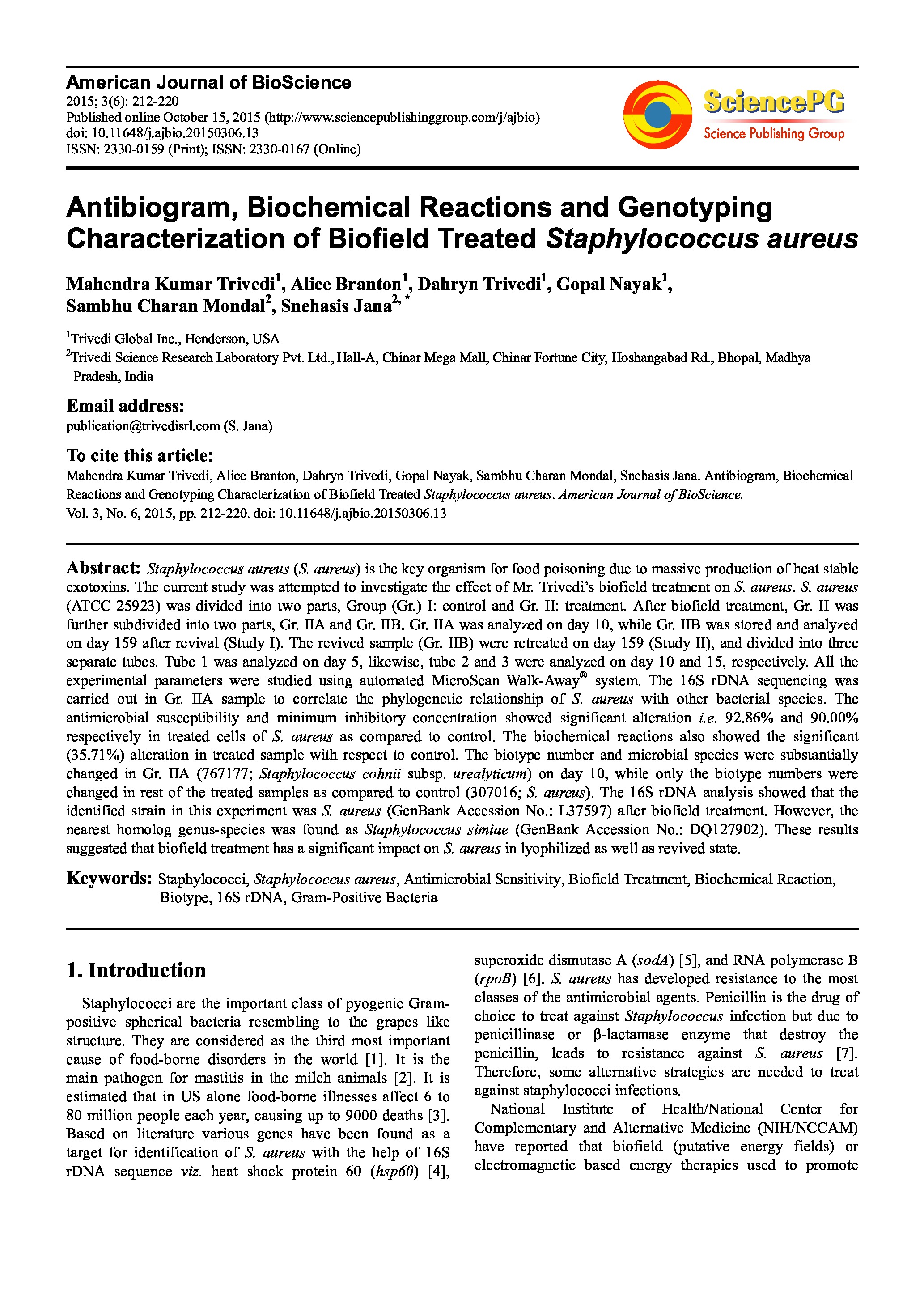Antibiogram, Biochemical Reactions and Genotyping Characterization of Biofield Treated Staphylococcus aureus
Affiliation
Trivedi Global Inc.; Trivedi Science Research Laboratory Pvt. Ltd.
Main category
Natural Sciences (Biology)
Abstract
Staphylococcus aureus (S. aureus) is the key organism for food poisoning due to massive production of heat stable exotoxins. The current study was attempted to investigate the effect of Mr. Trivedi’s biofield treatment on S. aureus. S. aureus (ATCC 25923) was divided into two parts, Group (Gr.) I: control and Gr. II: treatment. After biofield treatment, Gr. II was further subdivided into two parts, Gr. IIA and Gr. IIB. Gr. IIA was analyzed on day 10, while Gr. IIB was stored and analyzed on day 159 after revival (Study I). The revived sample (Gr. IIB) were retreated on day 159 (Study II), and divided into three separate tubes. Tube 1 was analyzed on day 5, likewise, tube 2 and 3 were analyzed on day 10 and 15, respectively. All the experimental parameters were studied using automated MicroScan Walk-Away® system. The 16S rDNA sequencing was carried out in Gr. IIA sample to correlate the phylogenetic relationship of S. aureus with other bacterial species. The antimicrobial susceptibility and minimum inhibitory concentration showed significant alteration i.e. 92.86% and 90.00% respectively in treated cells of S. aureus as compared to control. The biochemical reactions also showed the significant (35.71%) alteration in treated sample with respect to control. The biotype number and microbial species were substantially changed in Gr. IIA (767177; Staphylococcus cohnii subsp. urealyticum) on day 10, while only the biotype numbers were changed in rest of the treated samples as compared to control (307016; S. aureus). The 16S rDNA analysis showed that the identified strain in this experiment was S. aureus (GenBank Accession No.: L37597) after biofield treatment. However, the nearest homolog genus-species was found as Staphylococcus simiae (GenBank Accession No.: DQ127902). These results suggested that biofield treatment has a significant impact on S. aureus in lyophilized as well as revived state.
DOI
10.18147/smn.2016/paper:327
Do you have problems viewing the pdf-file? Download paper
here
If the paper contains inappropriate content, please
report the paper. You will be redirected to the landing page.
